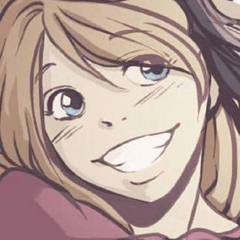Get to know CLIP STUDIO PAINT
Did you just install CLIP STUDIO PAINT for the first time and didn't know where to start? Don't panic, I suggest that you help you get started with this software.
What could be more telling than a demonstration in pictures! I invite you to watch this tutorial video where I briefly present the software features, how to organize your workspace and get started in creation.
CLIP STUDIO PAINT is a very complete software which can quickly become intimidating by the number of features available. Take the time to get to know him!
Presentation of the CLIP STUDIO PAINT software
CLIP STUDIO PAINT is a very complete software. With it you can:
Make color illustrations
Make BD / Manga / fanzines projects
Make animations
Do 3D modeling
It is available on computer (Windos and MacOs), Iphone, Ipad, and SAMSUNG tablets and smartphones of the Galaxy series.
When you download CLIP STUDIO PAINT for the first time, you first install the CLIP STUDIO software in which the shortcut to PAINT is located.
A bit of vocabulary before you start.
Canvas: This is the document on which you draw.
Layer: It is a layer on which you can draw. Add and organize different layers for pencil, inking, shading, color etc.
Material: These are resources that you can use in addition to CLIP STUDIO PAINT. It can be images, screens, patterns, brushes, workspaces.
Presentation of the different panels
In the video, I compare the interface of the software to a large cabinet-office in which there are drawer units with all the creative tools stored inside.
The work plan is hyper-modular. You can choose the blocks you want to keep on your desktop, move them to organize them in the way that suits you, then display them, reduce them or hide them entirely to make space.
In the video, I present the cabinet to you and I show you how to open the drawers so that as soon as you are ready, you can go and find the tools that interest you.
Office
It is the background of your software. This is where your projects will be displayed.
The command bar
The command bar is a menu of icons located below the main menu. It allows you to simplify your workspace by keeping only the essential shortcuts for creation.
There are several ways to customize this menu: either by dragging tools directly onto it, or by Right Clicking> Settings from the Command Bar.
Now let's go around the blocks arranged in a U shape around the desk.
The toolbar on the left
For me, this is another essential block since this main library brings together all the available tool families.
In the upper part, you have the general tools to modify your documents: selection area, eyedropper, zoom.
In the central part you have the free creation tools: pencils, brushes, pens, stamps, eraser, mixers.
In the lower part, you find the technical tools: rulers, shapes, gradients, text, bubbles, geometry and perspective tools.
The tools block
If we click on an icon in the main library, CLIP STUDIO PAINT shows us the inside of the corresponding drawer with all the predefined creation tools inside.
Example: Pen drawer, eraser drawers, etc.
You can create new tools by changing the settings of the predefined tools and saving copies. You can also download other tools from CLIP STUDIO, in the ASSETS tab.
Tool properties + Brush sizes
When a tool is selected, the software displays all of the tool's properties just below. Another block is also dedicated to the size of the brushes.
Color palettes
Chromatic disk, color set, palettes. You can choose to display the block that suits you and create custom palettes.
Chronology
This is a block specific to animation. Not to be confused with History which shows you all the operations made on the software in chronological order.
Layers
This block is very useful for making complex creations. When you open a new canvas, a new layer appears. You draw directly on it (a pencil sketch for example). To achieve the inking, you create a new layer that is added to the list of layers, above the first one. You can draw and erase on this second layer without altering the sketch of the first.
Add as many layers as you want, organize them in folders and experiment with the different options available in the layer block settings.
Layer properties
In the extension of the block of layers, you have the properties of the layers. Here you can choose the expression color (color, gray, monochrome), transform a drawing or an image into a raster or even add a color filter on your layer.
Navigation
Personally, I use the navigation block all the time when I draw. This block allows me to move my canvas on the desk and gives me more scope to draw.
I can zoom, rotate, reverse, move my canvas.
The materials
The materials shelf has several drawers: Color patterns, Monochrome patterns, Manga / Comic tools, Illustration tools, 3D tools and Downloads.
This is where all the resources predefined or added through CLIP STUDIO are stored. Among these resources, you will find screens, bubbles, onomatopoeias, poses, compositions of boards, 3D puppets that you can articulate, backgrounds ...
This shelf is full of materials and I invite you to take the time to discover it.
More panels
If you look closely at your panels displayed by default, you will see that for some blocks there are little tabs which let you guess that other blocks are available. Click on it to display the secondary blocks: History, Automatic actions, Animation cells, Image bank, Information, Quick access ... among others.
You will find all the available panels in the "Window" tab of the main menu.
Organize your workspace
Let's take the analogy of the modular office-cabinet in which we store shelves and drawers. If you want, you can move the blocks around to organize them however you want.
Some blocks are specific to a certain type of creation: painting / illustration, comics / manga, animation.
If you want to do anything, keep all your blocks available. Otherwise, you can choose to hide or remove certain blocks to focus on what interests you.
If you are working in monochrome and you don't intend to use color, there is no need to bother with specific blocks (palettes, color discs etc).
Make room to see more clearly!
Conversely, if you want to use CLIP STUDIO PAINT to make animations, maybe some tools that were previously indented would be more useful to you.
Click on the blocks you want to move and then holding down the mouse button, drag the blocks as you wish. Right, left… Everything is designed to make your workspace comfortable.
And if you got lost in the layout, it is always possible to go back to the default settings. To do this, go to the main menu, in the Window tab> Workspace> Restore default settings.
L’interface CLIP STUDIO
To go to the CLIP STUDIO interface, click the "Open Clip Studio" button on the command bar.
The CLIP STUDIO software opens and you have access to all kinds of resources and features.
Thanks to your Internet connection, the software stays up to date and displays, on the home page, all the news related to CLIP STUDIO: news, competitions, recent tutorials, etc.
To the left of the interface, there are several menus that allow us to navigate this software.
Manage
This menu provides access to its license options, to its works created and saved on CLIP STUDIO PAINT and then to the materials.
More than once I have opened this panel to put my documents in the cloud and share them between my two computers. I can share materials and settings between my desktop PC and my laptop.
Service
Here you can find all the resources made available in the tabs: Tutorials, ASSETS, ASK, TIPS, SHARE and help.
Export / Publish
Create, export and publish your digital books or comics from this menu.
Get started in creation
At this point in the presentation, you should feel more comfortable with CLIP STUDIO PAINT.
So we can start serious things and start drawing.
If you click on the "New" button in the command bar, you can create several types of new documents: Illustration, BD / Fanzine, Animation.
Here, I decide to create a new comic. I choose the settings: the format, the number of pages, the reading direction, color or black and white, the arrangement of the crop marks, etc.
Once my project is created, CLIP STUDIO PAINT offers me a preview of my project with all the thumbnails.
I can select the page I want to edit by double clicking on it.
Once my canvas is ready, all I have to do is select creative tools to draw.
Either I draw directly on this page, or I get the scan of a pencil sketch made on paper, or I insert a drawing made previously.
I refer you to the presentation video to see how to insert a raster pattern on your drawing.
Conclusion
Congratulations, you have just started to get started with the CLIP STUDIO PAINT software!
There is still a lot to see but I have chosen to keep a fairly global vision with this first presentation.
While waiting for a next tutorial, have fun discovering the tools, settings and parameters for yourself.














Comment